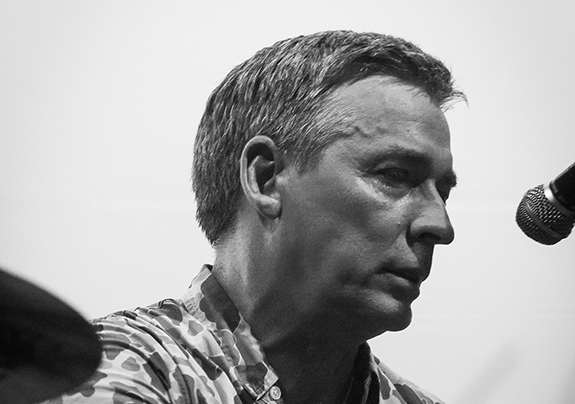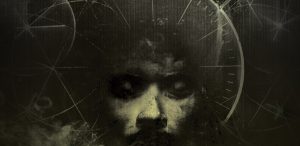DJ and trusted musical authority Don Letts was present to witness the formation of Dreadzone back in 1993. As he confidently states in their 20th anniversary film: “from that day to this, they’ve never failed to move the crowd”. The band’s bold fusion of dub reggae, electronica and tribal house has provided a fresh creative framework for the band since their first record, 360° and sees them continuing to write and perform prolifically today. Through ups and downs, drummer Greg Roberts has been a constant presence, anchoring the band from behind the drum kit and vocally leading with the group’s direction. Ahead of their return to Band on the Wall on 12th April, we spoke to Greg about the key to their longevity and their plans for this year.
During Dreadzone’s 25-year existence, the music industry has changed dramatically. What do you feel has been key to the band’s longevity, given the significant changes that have unfolded?
Greg Roberts: “A number of factors: primarily, we were never really big to begin with, plus we have been able reinvent ourselves over the years and have the desire to keep writing and making music that feels fresh and relevant. We have had some ups and downs, which has been channelled a lot into our writing. The loss of loved ones, family breakups, the BAD [Big Audio Dynamite] reunion and love escapades. We also come from a live tradition, so that is the best foundation. This year marks the 35th year of myself and Leo playing together as a rhythm section. We have managed to keep egos in check and we all know what role we are meant to fulfil and everyone is happy to rely on a competent captain to steer the ship (me.)”
Loki Dread, a well-loved member of the Dreadzone family, sadly passed away last month. For those who never met him, can you tell us a little about what Loki meant to the band and the role he played in your work?
GR: “Loki was like one of those friends who you want to have in your travelling group rather than someone who just did the job efficiently, except he was great at his job too. He ran the show: drive there, set it all up, control the runnings, and take it all down whilst making sure everyone was in the zone for the show. His humour and dedication meant he was just like a band member – it’s hard to condense into an answer the essence of someone like Loki. He was one of the good guys… with integrity, passion and a joy for life, love and music. the outpouring of love from the fans that knew him from the shows is testament to his unique character. A great human being, best friend and tattooed mohawked scouse super hero.”
In your 2013 short film, you spoke about the days prior to Dreadzone’s formation and referred to creating music with a sampler, sequencer and drum machine. Does the equipment you favoured at the beginning of the band still factor into your writing and production process today, or have advancements in technology made your older gear less important?
GR: “We mainly use Mac computers for everything now. It’s a natural progression and a technological leap for getting your ideas to develop into finished songs; it does the same job but quickly and more efficiently. Even though, there is something to be said for the feel and sound quality of those older units. I find them to have a warmth, tone and swing that is undeniably superior to modern digital sonics. I still find use for the old Roland analogue synths we used back then and mix them with on board plugins in Logic Pro.”
Music has taken Dreadzone to some fascinating places. What has been the most interesting or eye-opening place you’ve ever visited with the band?
GR: “It’s hard to beat our second ever show in 1993 at the Trekkoner festival in Denmark. A mile out to sea on an old war fortress, with a floating stage, and the Orb at sunset and sunrise, with us, System 7, Paul Daley, and Darren Emerson in between. A magical way to kick start our live story. Aside from that, too many great cities and festivals to mention. We have yet to take Dreadzone beyond Europe so we look forward to many more escapades in the future.”
Your Thursday sessions and mix archive affirm your deep music knowledge. What have been the band’s favourite tracks during the past twelve months? Have you collectively been moved by any particular tracks, records, gigs or mixes?
GR: “Collectively not so much, technology now means most people have their own soundtrack on the road rather than the old days where everyone would listen to the same music in the van. I prepare warm-up mixes for the shows, so that’s where we can appreciate a shared selection. Earl 16’s own track with Capitol 1212, a cover of Love will tear us apart, was a big tune last year . I recently discovered a band called Megative, which is rocking my world at the moment. Then stuff from Deadbeat, Numa Crew, plus the Sly and Robbie meets Dubmatix album was a favourite last year. At home, I tend to listen more to classical and cinematic ambience.”
What does 2019 have in store for the band? Do you plan to record this year and are the any other projects or ideas you’re hoping to initiate?
GR: “As we speak we are mastering and preparing for release a compilation album on our label of different artists that work with our wider dread family, including collaborations, a new project with my son Marlon called Sub Mantra plus some new Dreadzone. Then, we plan to start work on our next album very soon. We are constantly writing stuff so a lot of new music is coming through. We never stop writing, which takes us back neatly to your first question.”



